Chandra X-Ray Observatory Center
The Chandra X-ray Observatory, previously known as the Advanced X-ray Astrophysics Facility, is a Flagship-class space telescope launched aboard the Space Shuttle Columbia during STS-93 by NASA on July 23, 1999.

Science Facts Written by Chandra X-Ray Observatory Center
A Giant X-Ray Machine
The first clear detection of X-rays from the giant, gaseous planet Saturn has been made with NASA's Chandra X-ray Observatory. Chandra's image shows that the X-rays are concentrated near Saturn's ... Continue reading

White Dwarfs
White dwarfs are among the dimmest stars in the universe. Even so, they have commanded the attention of astronomers ever since the first white dwarf was observed by optical telescopes in the middle of ... Continue reading

X-ray Telescopes
X-rays are a highly energetic form of light, not visible to human eyes. Light can take on many forms -- including radio waves, microwaves, infrared, visible, ultraviolet, X-ray and gamma radiation. ... Continue reading

The Chandra Mission
NASA's Chandra X-ray Observatory, which was launched and deployed by Space Shuttle Columbia on July 23, 1999, is the most sophisticated X-ray observatory built to date. Chandra is designed to observe ... Continue reading

Introduction to Constellations
'Constellation' is the name we give to seeming patterns of starsin the night sky. 'Stella' is the Latin word for star and a constellation is a grouping of stars. In general, the stars in these groups ... Continue reading

Dark Matter Mystery
While carefully measuring the speed of rotation of galaxies, astronomers stumbled upon a profound cosmic mystery. Determining the gravity of the galaxy. They could estimate what the rotation speed ... Continue reading

Neutron Stars
Ordinary matter, or the stuff we and everything around us is made of, consists largely of empty space. Even a rock is mostly empty space. This is because matter is made of atoms. An atom is a cloud of ... Continue reading
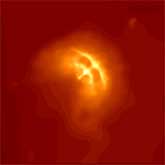
Galaxy Cluster RDCS 1252.9-2927
A color composite image of the galaxy cluster RDCS 1252.9-2927 shows the X-ray (purple) light from 70-million-degree Celsius gas in the cluster, and the optical (red, yellow and green) light from the ... Continue reading
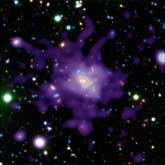
X-ray Emissions From Comets
The X-ray emission from comets is produced by high-energy particles, but the high-energy particles come not from the comet but from the sun. Matter is continually evaporating from the solar corona in ... Continue reading
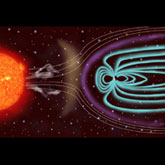
Starburst, No, Not The Candy
A starburst galaxy is a galaxy experiencing a period of intense star forming activity. Although this activity may last for ten million years or more, that is like a month in the life of a ten billion ... Continue reading
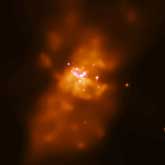
Crab Nebula
For millions of years a star shone in the far off constellation of Taurus. So far away, and so faint that even if our eyes were ten thousand times more sensitive, the star would still not be visible ... Continue reading
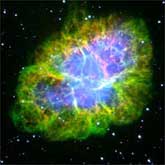
X-Rays - Another Form of Light
A new form of radiation was discovered in 1895 by Wilhelm Roentgen, a German physicist. He called it X-radiation to denote its unknown nature. This mysterious radiation had the ability to pass through ... Continue reading

X-Ray Images & False Color
The colors we see in the world around us are the result of the way that the human eye and brain perceive different wavelengths of light in the visible part of the electromagnetic spectrum. X-rays, and ... Continue reading

Subrahmanyan Chandrasekhar
NASA's premier X-ray observatory was named the Chandra X-ray Observatory in honor of the late Indian-American Nobel laureate, Subrahmanyan Chandrasekhar (pronounced: su/bra/mon'/yon chandra/say/kar). ... Continue reading

Powerful Quasars
Quasars appear as distant, highly luminous objects that look like stars. Strong evidence now exists that a quasar is produced by gas falling into a supermassive black hole in the center of a galaxy. ... Continue reading

Binary and Multiple Star Systems
Stars, like people, are seldom found in isolation. More than 80% of all stars are members of multiple star systems containing two or more stars. Exactly how these systems are formed is not well ... Continue reading
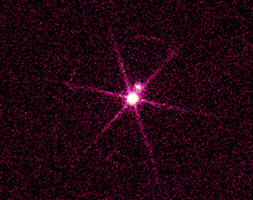
X-Ray Astronomy vs. Medical X-Rays
It's natural to associate the X-rays from cosmic objects with an X-ray from the doctor's office, but the comparison is a bit tricky. A doctor's X-ray machine consists of two parts: an X-ray source at ... Continue reading

Groups & Clusters of Galaxies
Galaxy clusters are the largest gravitationally bound objects in the universe. They have three major components: (i) hundreds of galaxies containing stars, gas and dust; (ii) vast clouds of hot (30 - ... Continue reading

